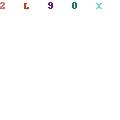Few astro-images excite the imagination like the Orion Nebula. Also known as M42, this is the brightest nebula seen from the northern skies. The nebula is a star factory as the glowing gas surrounding the hot young stars is slowly but surely collapsing to make hot new stars. It’s only 1,350 light-years away. The Nebula is about is estimated to be 24 light years across and it has a mass of about 2000 times the mass of the Sun.
From a scientist’s standpoint, the Orion Nebula offers one of the best opportunities to study how stars are born partly because it is the nearest large star-forming region, but also because the nebula’s energetic stars have blown away obscuring gas and dust clouds that would otherwise block our view – providing an intimate look at a range of ongoing stages of starbirth and evolution.
The nebula is visible with the naked eye even from areas affected by some light pollution. It is seen as the middle “star” in the “sword” of Orion, which are the three stars located south of Orion’s Belt. The star appears fuzzy to sharp-eyed observers, and the nebulosity is obvious through binoculars or a small telescope. Having said that, it is dim enough that the cones of our eyes cannot see it and only rods can, which means that we can only see it gray colors.
The nebula can look like a sideways looking bird with a well defined beak and flowing feathers.
I took these images with relatively shorter time duration because of its high brightness. Total of 76 minutes (43 images of 1 minutes each for luminance and 11 images of RGB for 1 minutes as well).
The great tools ‘Masked Stretch’ and ‘HDR processing’ in Pixinsight allows this object, which has an extremely bright core, to be processed without flaring up the core too much.

It was time to do a good narrowband image of M42 and I believe it has come out reasonably good with sharper stars and substantially more photons. These images were taken with 3 different filters – Hydrogen Alpha (36 images of 10 minutes each), Oxygen III (18 images of 10 minutes) and Sulfur (16 images of 10 minutes). Thus we take all the emission nebula’s molecular cloud without getting the rest of the spectrum (visible light and infrared) thereby getting reasonably limited data from stars. And that makes stars sharper and nebula get differentiated more clearly from star-clutter.
